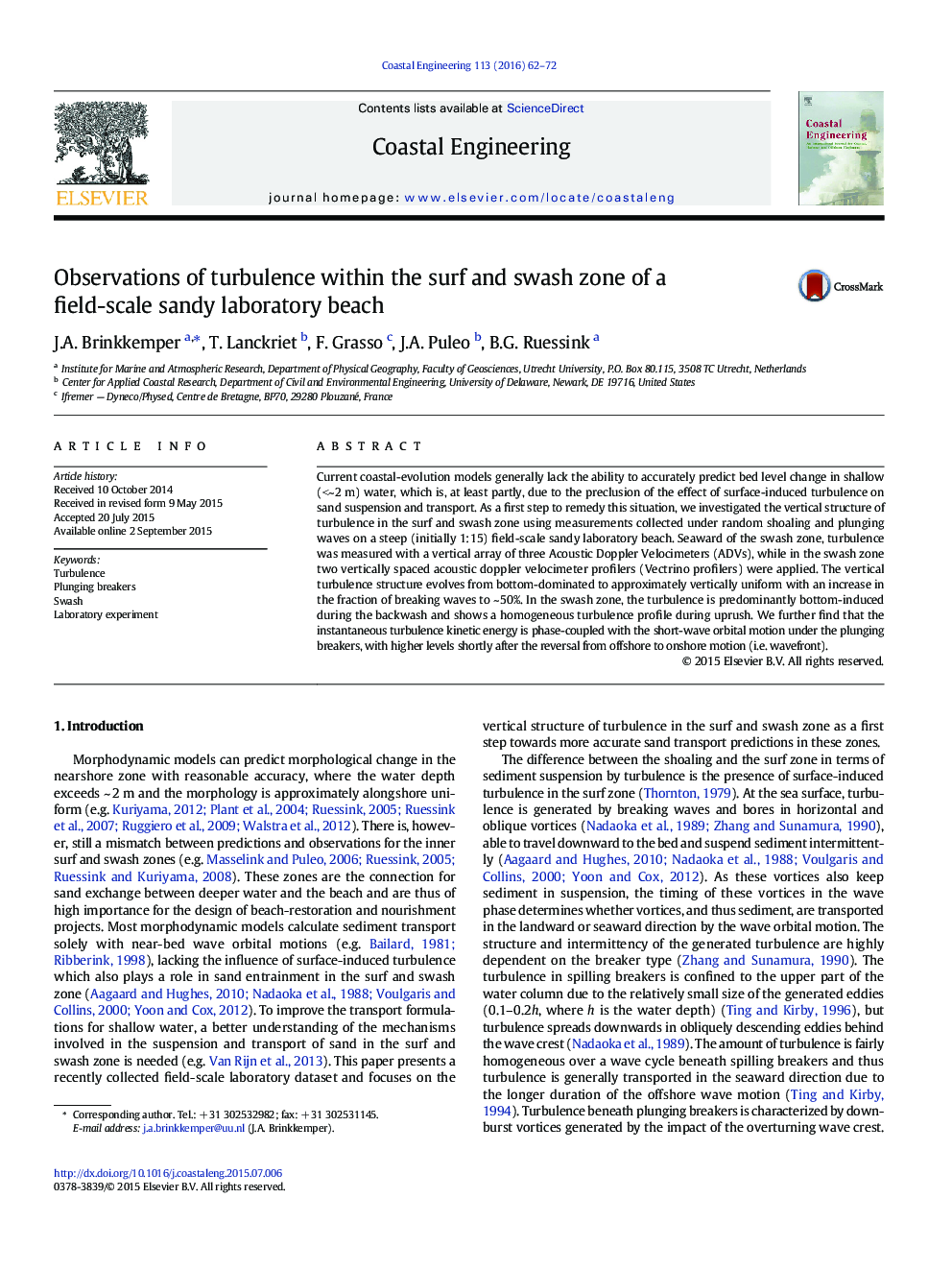| Article ID | Journal | Published Year | Pages | File Type |
|---|---|---|---|---|
| 1720541 | Coastal Engineering | 2016 | 11 Pages |
•The vertical turbulence structure in the surf and swash zone was studied.•The ratio between surface- and bottom-generated turbulence is cross-shore dependent.•Turbulence is phase-coupled to short and long wave orbital motions in the surf zone.•A uniform structure was found during uprush between the lower and upper swash zone.
Current coastal-evolution models generally lack the ability to accurately predict bed level change in shallow (<~2 m) water, which is, at least partly, due to the preclusion of the effect of surface-induced turbulence on sand suspension and transport. As a first step to remedy this situation, we investigated the vertical structure of turbulence in the surf and swash zone using measurements collected under random shoaling and plunging waves on a steep (initially 1:15) field-scale sandy laboratory beach. Seaward of the swash zone, turbulence was measured with a vertical array of three Acoustic Doppler Velocimeters (ADVs), while in the swash zone two vertically spaced acoustic doppler velocimeter profilers (Vectrino profilers) were applied. The vertical turbulence structure evolves from bottom-dominated to approximately vertically uniform with an increase in the fraction of breaking waves to ~ 50%. In the swash zone, the turbulence is predominantly bottom-induced during the backwash and shows a homogeneous turbulence profile during uprush. We further find that the instantaneous turbulence kinetic energy is phase-coupled with the short-wave orbital motion under the plunging breakers, with higher levels shortly after the reversal from offshore to onshore motion (i.e. wavefront).
